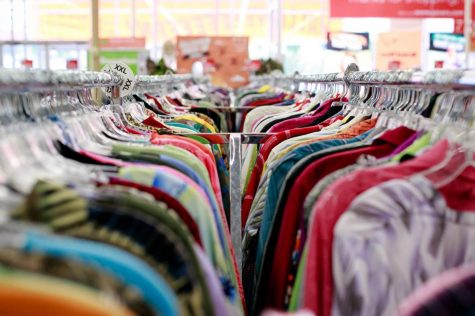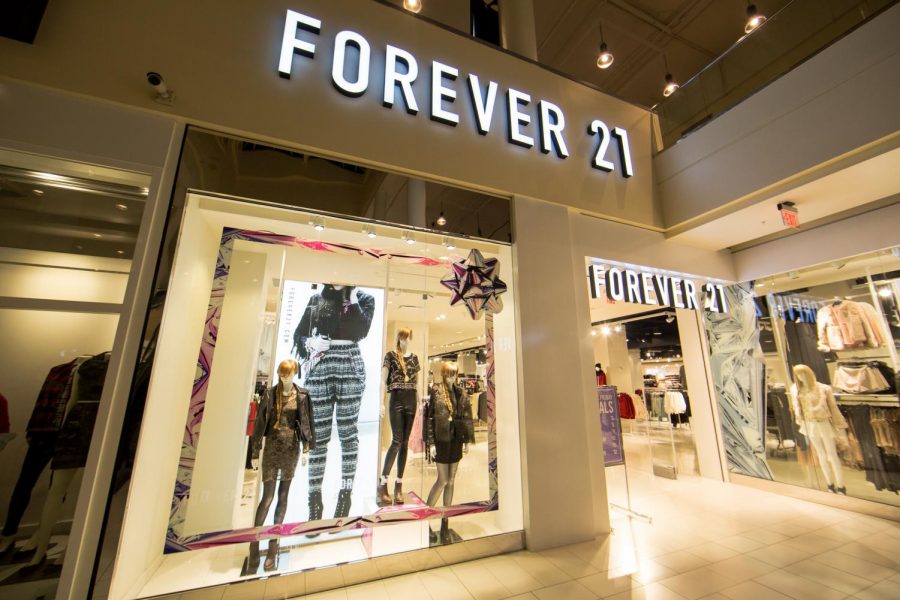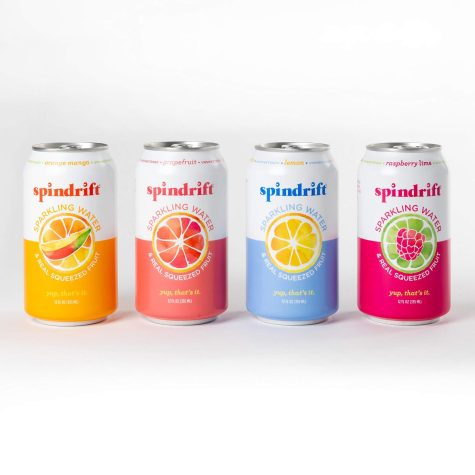What’s Wrong With Fast Fashion, And How You Can Help
Chances are, at some point in your life, you’ve purchased something — or a lot of things — from Forever 21. And why wouldn’t you? Their clothes are easily accessible, trendy, and affordable. Unfortunately, however, stores like Forever 21, H&M, Zara, and many others participate in what’s known as “fast fashion,” a system of running a clothing company that has negative environmental impacts and relies on the inhumane treatment of workers.
Fast fashion is defined by Merriam Webster as “an approach to the design, creation, and marketing of clothing fashions that emphasizes making fashion trends quickly and cheaply available to consumers.” Since the mid-20th century, clothing has shifted from being produced in four seasons to being churned out constantly, in an effort to keep up with ever-changing trends. This results in tons of clothing being made very cheaply, intended to be worn only a few times. Since the clothes are switched out so quickly to stay on trend, there is a huge amount of waste; about 60% of clothing produced in a year is tossed into landfills. For obvious reasons, this is extremely harmful to our planet. In fact, it has been estimated that the textile industry contributes more to climate change than aviation and shipping combined.
As well as harming the environment, fast fashion often goes hand in hand with unfair worker treatment. Making cheap clothing usually means using factories in developing countries, where the conditions are often less regulated. Employees are often not paid well or not at all, and are forced to work long hours and in unsafe conditions. In 2013, the Rana Plaza factory in Bangladesh collapsed, killing 1,100 workers and injuring 2,000 more. The factory produced clothing for brands including J.C. Penney and Walmart.
80 percent of the 74 million garment workers worldwide are women of color as well, and clothing companies often profit off of their exploitation and mistreatment. The toxins often used in production and the long hours sitting in place affect their reproductive and mental health. In Chennai, India, factory workers were given illegal medication to help with menstrual pain; the medication had possible long-term side effects such as depression, anxiety, and miscarriages.
The pandemic has caused even more issues. The city of Katunayake in Sri Lanka is made up of more than 80 factories, and the crowded boarding houses in which many employees live are a breeding ground for COVID-19. Additionally, the decrease in sales has led to even lower pay. From March to May, Sri Lankan garment workers lost roughly 40 percent of their usual wages.
After speaking with a few Allderdice students, it’s clear that while they have a general idea of fast fashion and know that it’s harmful, they may not be aware of the specific effects it can have.
Erica O’Hare, a sophomore, says that not enough people shop ethically “because of trends, and people with a lot of popularity promoting fast fashion brands. People [want] to fit in and get the newest thing.” She says that she tries to avoid those brands by reusing clothes, thrifting, and utilizing hand-me-downs.
Sophomore Ellie Kannel adds that it’s difficult to combat the ease with which you can shop fast fashion. “With everything online, it’s all so easy to shop and look at the entirety of a store in one sitting. It’s terribly convenient.”
So what can we do to avoid supporting these corporations? The most unethical stores are, after all, often the most popular, and not everyone wants, or can afford, a plain t-shirt that costs $65 because it’s ethically sourced. However, there are actually plenty of options to stay sustainable without breaking the bank.
First of all, be informed about which stores to stay away from. There are countless lists of fast fashion companies online, like this one from Almost Zero Waste, which contains pros and cons of each one as well. The app Good On You allows you to search brands and see them rated by sustainability, as well as better alternatives if they have a low rating, and the browser extension DoneGood gives you sustainability information about each shopping website you visit.

Thrift stores are an easy way to shop sustainably. You’re not putting money into a harmful cycle of clothing production, you can get quality clothes for very low prices, and since most thrift stores are small businesses or charitable organizations, you’re supporting a good cause as well.
If you’re willing to spend a little more money to avoid fast fashion, it’s also a perfect opportunity to check out ethical companies, both local and national. Levi’s, Pact, ABLE, Kiya Tomlin, and Idia’Dega (an Allderdice Alumna) are just a few examples of stylish businesses, and while they’re more expensive than a thrift shop, they’re still reasonably priced. And finally, the simplest step you can take to shopping for more ethical clothing is to buy less. Before you buy something, think about how many times you’re likely to wear it, and try to purchase items that you can mix and match easily.
Of course, there might be times where the shirt you want to buy for your friend can’t be found anywhere but Urban Outfitters, or you need to run to the nearest Target to grab a dress for a last-minute event. It can be difficult to shop sustainably in a society filled with unsustainable companies. However, do your best to keep those purchases to a minimum, and remember that there are plenty of alternatives, and that the positives of shopping in an environmentally conscious way vastly outweigh the negatives.
Hannah Schwartz is a senior at Pittsburgh Allderdice High School who has enjoyed writing for as long as she can remember. She is also a member of Allderdice...







